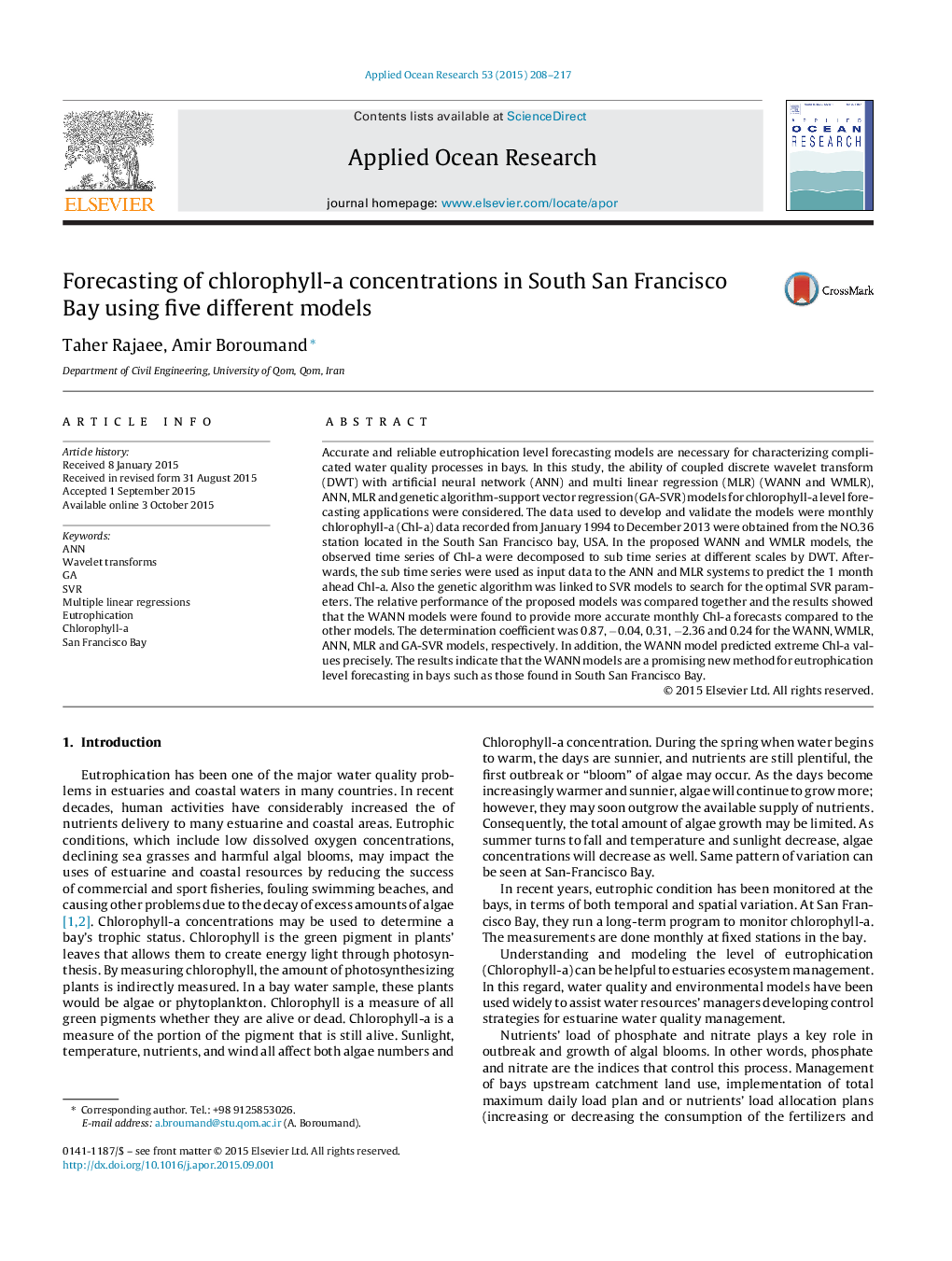| Article ID | Journal | Published Year | Pages | File Type |
|---|---|---|---|---|
| 1719914 | Applied Ocean Research | 2015 | 10 Pages |
•Consideration of the ability of coupled discrete wavelet transform (DWT) with artificial neural network (ANN) and multi linear regression (MLR) (WANN and WMLR), ANN, MLR and genetic algorithm-support vector regression (GA-SVR) models in chlorophyll-a level forecasting applications.•Comparison between the results of WANN, WMLR, ANN, MLR, and GA-SVR models.•Development of an effective model for chlorophyll-a level forecasting in San Francisco Bay.•Extraction of useful information of time series using DWT, and improvement of forecasting results.
Accurate and reliable eutrophication level forecasting models are necessary for characterizing complicated water quality processes in bays. In this study, the ability of coupled discrete wavelet transform (DWT) with artificial neural network (ANN) and multi linear regression (MLR) (WANN and WMLR), ANN, MLR and genetic algorithm-support vector regression (GA-SVR) models for chlorophyll-a level forecasting applications were considered. The data used to develop and validate the models were monthly chlorophyll-a (Chl-a) data recorded from January 1994 to December 2013 were obtained from the NO.36 station located in the South San Francisco bay, USA. In the proposed WANN and WMLR models, the observed time series of Chl-a were decomposed to sub time series at different scales by DWT. Afterwards, the sub time series were used as input data to the ANN and MLR systems to predict the 1 month ahead Chl-a. Also the genetic algorithm was linked to SVR models to search for the optimal SVR parameters. The relative performance of the proposed models was compared together and the results showed that the WANN models were found to provide more accurate monthly Chl-a forecasts compared to the other models. The determination coefficient was 0.87, −0.04, 0.31, −2.36 and 0.24 for the WANN, WMLR, ANN, MLR and GA-SVR models, respectively. In addition, the WANN model predicted extreme Chl-a values precisely. The results indicate that the WANN models are a promising new method for eutrophication level forecasting in bays such as those found in South San Francisco Bay.
